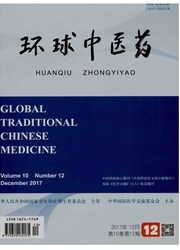

 中文摘要:
中文摘要:
利用中国知网、万方、维普、Pub Med数据库,系统检索1949年以来关于"十八反"中甘遂甘草反药组合同用的研究文献,检索文章的过程中剔除综述及临床研究类文章,选取实验研究方面的文章,总结归纳甘遂甘草反药组合配伍使用的适宜和禁忌条件。结果发现甘遂与甘草反药组合配伍的药效和毒性受配伍剂量、配伍比例、入药方式、炮制品种、给药途径、给药时间等多方面影响。初步认为低剂量(接近临床用量)及甘遂与甘草1∶15或1∶10配伍属于配伍的适宜条件。而禁忌条件是高剂量(临床用量的数十倍)及甘遂与甘草1∶1或1∶2配伍。现有的文献显示生甘遂与炙甘草配伍,两药入汤剂先分煎后合并,口服以及短时间给药为配伍适宜条件;而醋甘遂与炙甘草、醋甘遂与生甘草、生甘遂与生甘草配伍,腹腔注射以及长时间给药为配伍禁忌条件。笔者认为甘遂甘草能否同用不能一概而论,而是受到不同条件的限制。在今后的科学研究中,应增加多条件交叉、多层次深入的研究,丰富和完善甘遂甘草配伍的宜忌条件,进而对临床应用提供可参考的指导意见。
 英文摘要:
英文摘要:
This article summarized the suitable conditions and contraindicant conditions of antagonism compatibility kansui radix and glycyrrhiza from the selected experimental research articles by searching “kansui radix and glycyrrhiza compatibility of Chinese medicine Eighteen antagonism” from Wan Fang, CNKI, and VIP database since 1949. The efficacy and toxicity of kansui radix and glycyrrhiza antagonism compatibility are affected by many conditions, including proportion, dose, extracting manner, prepared varieties, route of administration, and time. The results showed the suitable conditions are when low dose (near to the clinical dose) or the ratios of kansui radix and glycyrrhizae are 1:15 or 1:10. The contraindicant conditions are high dose or 1:1 or 1:2 ratios. Literatures suggested that when applying mixed solution of the single decoction of kansui radix and prepared glycyrrhiza respectively, or gavaging for a short time are suitable conditions. While vinegar-preparing kansui radix and prepared glycyrrhiza, vinegar-preparing kansui radix and raw glycyrrhiza, raw kansui and raw glycyrrhiza or injecting intraperitoneally for a long time are contraindicant conditions. In my opinion, whether kansui radix and gly-cyrrhiza can be used together or not is limited by different conditions and can’ t be generalized in a few words. More researches should be done in the future to enrich suitable and contraindicant conditions for kansui radix and glycyrrhiza compatibility, and then to provide guidance for the clinical application.
 同期刊论文项目
同期刊论文项目
 同项目期刊论文
同项目期刊论文
 期刊信息
期刊信息
